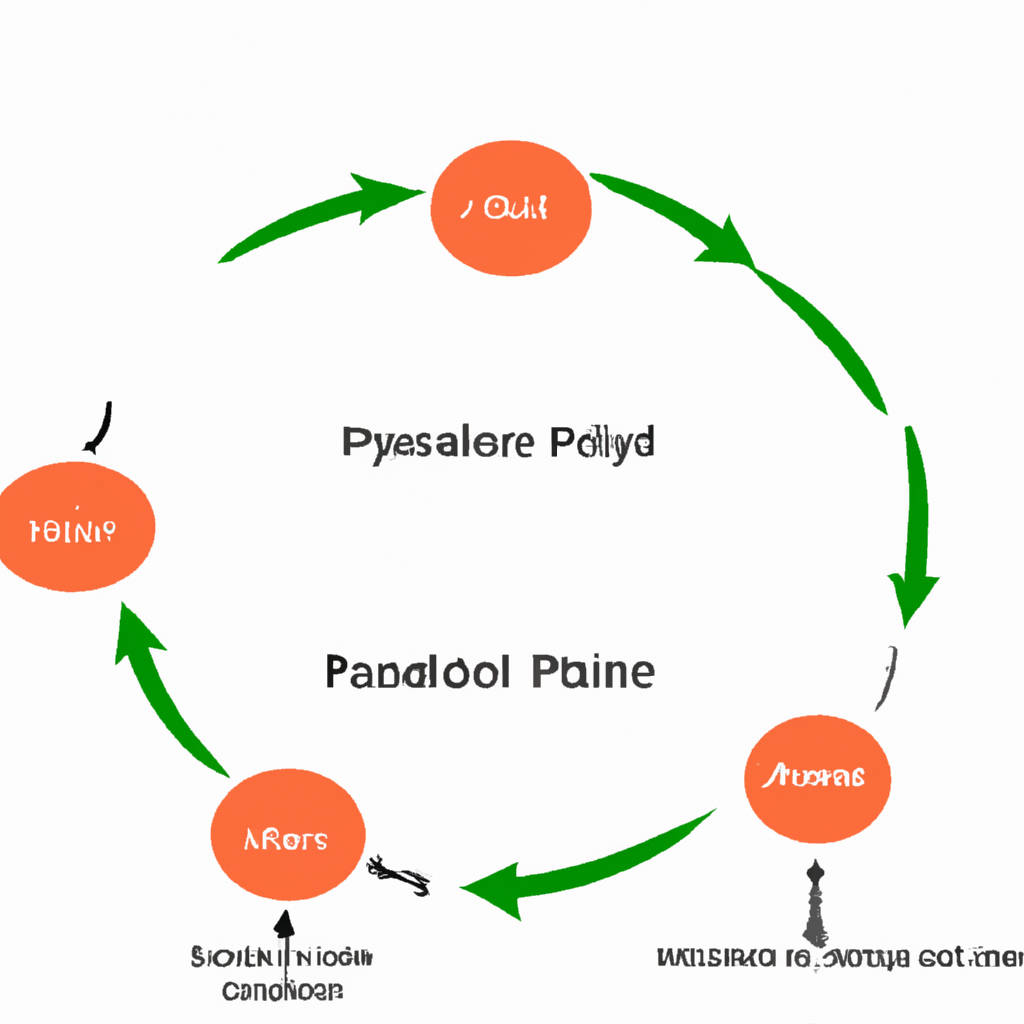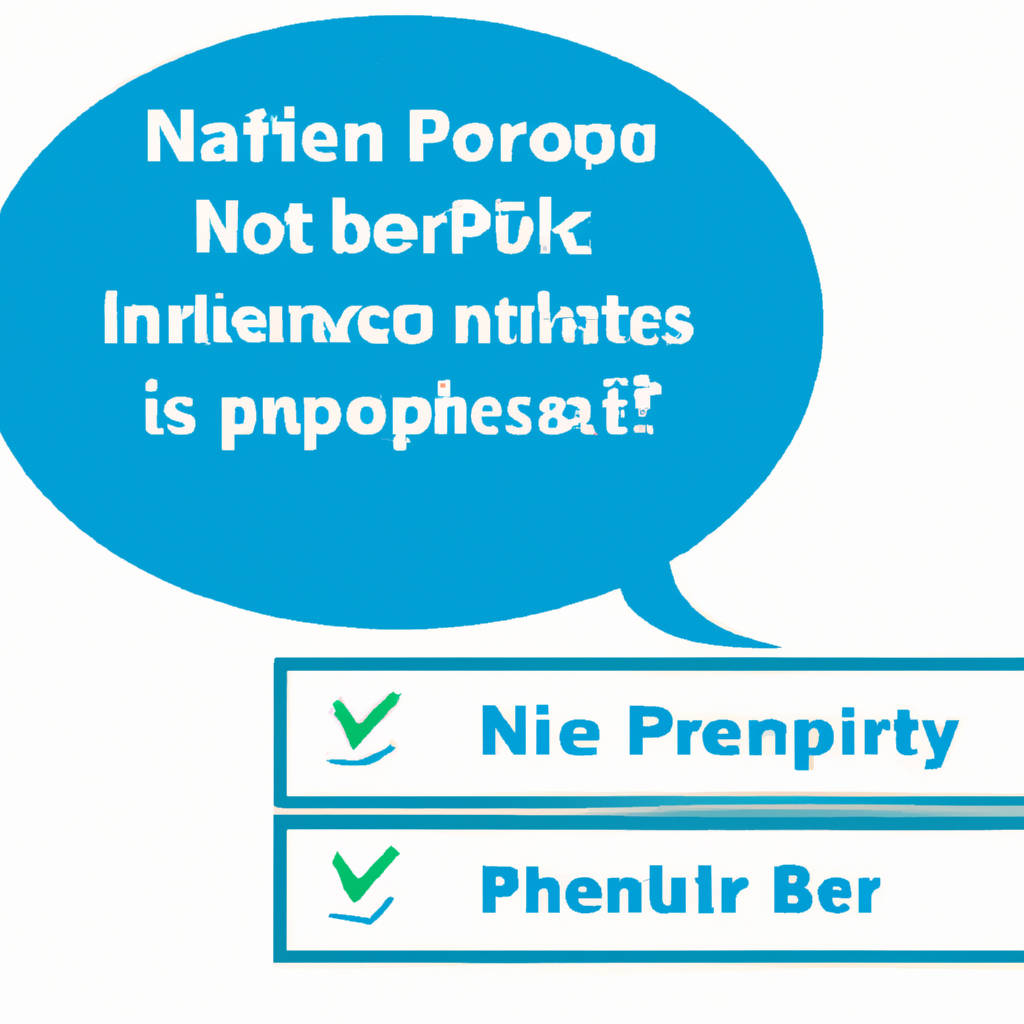NPP Steroid Cycle
NPP steroid cycle, also known as Nandrolone Phenylpropionate, is one of the most commonly utilized anabolic steroids in the world of bodybuilding and athletics. This compound is highly regarded for its ability to promote muscle growth, enhance strength, and improve athletic performance. NPP is derived from the hormone testosterone and possesses potent anabolic properties without the androgenic effects commonly associated with other steroids. Its chemical structure allows for a slower release into the bloodstream, resulting in a more sustained and controlled release of the hormone within the body. This makes NPP an ideal choice for individuals aiming to build lean muscle mass while minimizing the risk of undesirable side effects. It is worth noting that NPP is only available via prescription and should be used under the supervision of a healthcare professional to ensure safe and responsible usage. When incorporated into a well-designed steroid cycle, NPP can yield remarkable results for athletes and bodybuilders alike. It is often combined with other performance-enhancing substances to maximize its benefits and achieve specific goals. The duration and dosage of the cycle may vary depending on an individual’s experience, desired outcomes, and overall health. However, it is crucial to emphasize that the misuse or abuse of NPP or any other steroid can lead to severe health consequences. Therefore, it is imperative to prioritize safety, adhere to recommended guidelines, and undergo regular medical check-ups to monitor any potential adverse effects. In conclusion, the NPP steroid cycle offers a promising approach for individuals seeking to enhance their physical performance and physique. When used responsibly and under professional guidance, NPP can be a valuable tool to support muscle growth and athletic endeavors. However, it is essential to prioritize one’s health and well-being above all else and approach the use of NPP or any other steroid with caution and mindfulness.

What Is NPP Steroid?
NPP, also known as Nandrolone Phenylpropionate, is a widely used steroid in the bodybuilding and athletic community. With its potent anabolic properties, NPP has gained popularity among individuals seeking to enhance their muscle mass and performance. Derived from the parent hormone, Nandrolone, NPP possesses a phenylpropionate ester, which allows for a rapid release of the hormone into the bloodstream after injection. This characteristic distinguishes NPP from other forms of Nandrolone, such as Deca Durabolin, which has a longer ester chain, resulting in a slower release. Due to its shorter half-life, NPP requires more frequent injections to maintain stable blood levels. This can be advantageous for users who prefer to have greater control over their dosages. Additionally, NPP is known for its low conversion to estrogen, reducing the likelihood of estrogenic side effects such as water retention and gynecomastia. Its ability to promote nitrogen retention in the muscles further contributes to its reputation as a highly effective anabolic compound. NPP is often incorporated into bulking cycles, as it promotes significant gains in muscle mass, strength, and endurance. Despite its popularity, it is important to note that the use of NPP should always be undertaken responsibly and under the guidance of a healthcare professional, as misuse or abuse of this steroid can lead to adverse health effects.
What Are The Benefits Of NPP?
Nandrolone Phenylpropionate (NPP) is a popular anabolic steroid that offers a range of benefits for athletes, bodybuilders, and individuals seeking to enhance their physical performance. One of the key advantages of NPP is its ability to promote muscle growth and increase strength. NPP stimulates protein synthesis, which aids in the development and repair of muscle tissues. This results in a significant improvement in muscle size and overall physique. Additionally, NPP also helps to increase red blood cell production, leading to improved endurance and stamina. This allows athletes and fitness enthusiasts to train harder and for longer durations, leading to enhanced athletic performance.
Furthermore, NPP has been found to have positive effects on joint health. It helps to alleviate joint pain and discomfort, making it highly beneficial for individuals engaged in intense physical activities that can put stress on the joints. NPP promotes collagen synthesis, which helps to strengthen the tendons and ligaments, reducing the risk of injuries. This makes it an ideal choice for athletes and individuals with joint-related issues.
In addition to its muscle-building and joint-strengthening properties, NPP also aids in the recovery process. It accelerates the healing of muscle and connective tissues, enabling individuals to bounce back quickly from intense workouts or injuries. This allows for more frequent and intense training sessions, leading to faster progress in achieving fitness goals. Moreover, NPP can also improve the body’s ability to retain nitrogen, which is essential for muscle growth and recovery.
Another benefit of NPP is its ability to enhance bone density. This is particularly advantageous for older individuals or those suffering from bone-related conditions such as osteoporosis. NPP helps to increase calcium retention in the bones, making them stronger and less prone to fractures. This promotes overall bone health and reduces the risk of injuries.
Apart from its physical benefits, NPP can also have positive effects on mental well-being. It has been reported to improve mood, increase motivation, and enhance overall cognitive function. This can be attributed to the increased levels of testosterone resulting from NPP use. Testosterone plays a crucial role in regulating mood, energy levels, and mental focus. By enhancing testosterone levels, NPP can contribute to an improved sense of well-being and overall mental clarity.
It is important to note that while NPP offers numerous benefits, its use should always be done under the supervision of a healthcare professional. Like any other performance-enhancing substance, NPP can have potential side effects if misused or abused. These can include hormonal imbalances, liver toxicity, cardiovascular issues, and negative effects on cholesterol levels. Therefore, it is crucial to use NPP responsibly and in accordance with medical guidance to minimize the risks associated with its usage.
In conclusion, Nandrolone Phenylpropionate (NPP) provides a range of advantages for individuals seeking to enhance their physical performance. From promoting muscle growth and strength to improving joint health and aiding in recovery, NPP offers multiple benefits. Additionally, it can also enhance bone density, improve mental well-being, and boost cognitive function. However, it is important to use NPP responsibly and under medical supervision to minimize potential risks.

Increase Mass Building
Increasing mass building is a goal that many individuals strive to achieve in their fitness journey. It involves the process of developing and enlarging muscle size and strength through various exercises and proper nutrition. The key to successful mass building lies in understanding the body’s natural ability to adapt and grow muscles. By engaging in a consistent and structured workout routine, individuals can stimulate muscle fibers, causing them to tear and repair themselves, resulting in increased muscle mass over time. Additionally, a nutrient-rich diet that includes a balance of proteins, carbohydrates, and healthy fats is crucial in providing the body with the necessary fuel to support muscle growth.
A well-rounded workout routine is essential for increasing mass building. Incorporating compound exercises such as squats, deadlifts, bench presses, and shoulder presses, allows for the activation of multiple muscle groups simultaneously, promoting overall muscle growth. These exercises also stimulate the release of anabolic hormones, such as testosterone and growth hormone, which play a vital role in muscle development. It is important to progressively overload the muscles by gradually increasing the weight or intensity of the exercises to continually challenge the body and promote muscle growth.
In addition to a structured workout routine, proper nutrition is crucial for increasing mass building. Consuming an adequate amount of protein is essential as it provides the building blocks required for muscle repair and growth. High-quality protein sources such as lean meats, fish, eggs, and plant-based proteins like legumes and tofu, should be incorporated into meals throughout the day. Carbohydrates serve as the primary fuel source for intense workouts, providing energy for muscle contractions and replenishing glycogen stores. Complex carbohydrates like whole grains, fruits, and vegetables are preferred over simple sugars as they provide sustained energy. Healthy fats, found in sources like avocados, nuts, and olive oil, support hormone production and help with nutrient absorption. It is important to strike a balance between these macronutrients to optimize muscle growth and overall health.
Furthermore, adequate rest and recovery are crucial for increasing mass building. Muscles grow and repair themselves during periods of rest, so it is essential to allow for sufficient recovery time between workouts. Overtraining can lead to muscle breakdown and hinder progress towards mass building goals. It is recommended to have at least one or two days off from intense workouts each week to allow the body to recover fully. Additionally, prioritizing quality sleep is vital for muscle recovery and growth. During sleep, the body releases growth hormone, which is essential for muscle repair and regeneration. Aim for seven to nine hours of uninterrupted sleep each night to optimize muscle building potential.
In conclusion, increasing mass building is a process that requires dedication, consistency, and a holistic approach. Engaging in a well-structured workout routine that includes compound exercises and progressive overload is essential for stimulating muscle growth. Proper nutrition, with a focus on adequate protein intake, balanced carbohydrates, and healthy fats, supports muscle repair and growth. Additionally, prioritizing rest and recovery, including sufficient sleep, allows the body to repair and build muscles effectively. By incorporating these principles into a fitness journey, individuals can work towards achieving their mass building goals and fostering a strong and healthy body.
Boost Recovery Process
The process of enhancing recovery is vital for individuals striving to regain their optimal physical and mental well-being. Boosting the recovery process involves implementing various strategies and techniques that aid in the restoration and rejuvenation of the body and mind. One of the most effective ways to expedite recovery is through proper nutrition and hydration. Adequate consumption of nutrient-rich foods and fluids provides the body with essential elements necessary for repairing damaged tissues and replenishing energy stores. A balanced diet comprising of fruits, vegetables, lean proteins, and whole grains not only provides the necessary nutrients but also aids in reducing inflammation and promoting overall healing. Hydration, on the other hand, is crucial as it helps maintain proper bodily functions and supports the elimination of toxins, facilitating the recovery process.
In addition to proper nutrition and hydration, sufficient rest and sleep are integral components of the recovery process. Rest allows the body to recuperate and rebuild, particularly after intense physical exertion or injury. It is during rest that the body repairs damaged tissues, strengthens muscles, and replenishes energy levels. Adequate sleep, on the other hand, plays a crucial role in promoting overall well-being. While we sleep, our bodies undergo essential processes such as hormone regulation, cellular repair, and memory consolidation. Insufficient sleep can hinder these processes, impeding the recovery and healing process. Thus, it is imperative to prioritize sleep and ensure we get an adequate amount of rest each night.
Another key aspect of boosting the recovery process is engaging in appropriate physical activity and exercise. While it may seem counterintuitive to exert the body further during recovery, moderate exercise has been shown to promote healing and accelerate the recovery process. Physical activity increases blood flow and circulation, delivering oxygen and nutrients to the injured or fatigued areas, facilitating healing. Furthermore, engaging in exercise releases endorphins, which are natural mood enhancers that alleviate stress and promote a positive mindset. However, it is crucial to consult with a healthcare professional or physical therapist to determine the appropriate level and type of exercise that is suitable for individual circumstances.
Additionally, implementing stress management techniques can significantly contribute to the recovery process. Chronic stress can impede the body’s ability to heal and recover, as it places excessive strain on the immune system and hinders the body’s natural healing mechanisms. Techniques such as meditation, deep breathing exercises, and mindfulness practices can help reduce stress levels, promote relaxation, and enhance the recovery process. By incorporating these techniques into daily routines, individuals can effectively manage stress and support their overall well-being.
Lastly, maintaining a positive mindset and fostering a supportive environment can greatly contribute to the recovery process. The power of positive thinking and belief in one’s ability to heal should not be underestimated. Research has shown that individuals with a positive outlook tend to experience faster recoveries and better overall outcomes compared to those with a negative mindset. Surrounding oneself with a supportive network of family, friends, and healthcare professionals can also provide emotional and physical support, further aiding in the recovery process.
In conclusion, boosting the recovery process is essential for individuals striving to regain their optimal physical and mental well-being. By implementing strategies such as proper nutrition and hydration, adequate rest and sleep, appropriate physical activity, stress management techniques, and maintaining a positive mindset, individuals can expedite their recovery and promote overall healing and rejuvenation. The journey to recovery may be challenging, but with the right approach and commitment, individuals can achieve their desired outcomes and regain their vitality.

Preserve Lean Muscle
Preserving lean muscle is a crucial aspect of maintaining overall health and physical fitness. Lean muscle tissue plays an essential role in our daily activities, from enabling us to perform simple tasks like walking and lifting objects to enhancing our metabolism and preventing the onset of chronic diseases. While it is widely acknowledged that the preservation of lean muscle is vital, it is equally important to focus on the methods and strategies that can help us achieve this goal. By adopting a balanced diet, engaging in regular physical activity, and ensuring adequate rest and recovery, individuals can effectively preserve their lean muscle mass and enjoy the numerous benefits it brings.
One of the primary ways to preserve lean muscle is through a well-rounded and balanced diet. Consuming a diet that is rich in lean protein sources, such as poultry, fish, legumes, and tofu, is essential for the growth and maintenance of muscle tissue. Protein provides the necessary amino acids that repair and rebuild muscle fibers after exercise or physical activity. Additionally, including a variety of fruits, vegetables, whole grains, and healthy fats in our diet ensures that we receive the necessary vitamins, minerals, and antioxidants that support muscle health. By nourishing our bodies with a nutrient-dense diet, we can optimize our muscle preservation efforts.
Regular physical activity is another key component in the preservation of lean muscle. Engaging in both cardiovascular exercises, such as running or cycling, and resistance training activities, like weightlifting or bodyweight exercises, helps to stimulate muscle growth and prevent muscle loss. Cardiovascular exercises improve blood circulation, delivering essential nutrients and oxygen to the muscles, while resistance training promotes muscle hypertrophy, increasing muscle mass and strength. Combining both types of exercise in a well-rounded fitness routine not only helps to preserve lean muscle but also enhances overall physical performance and endurance.
Apart from diet and exercise, ensuring adequate rest and recovery is essential for muscle preservation. Muscles need time to repair and rebuild after intense workouts, and without sufficient rest, they may not be able to recover fully. Getting enough sleep is crucial as it allows the body to produce growth hormone, which aids in muscle repair and growth. Additionally, incorporating rest days into a workout routine is essential to prevent overtraining and reduce the risk of injuries. By giving our muscles the time they need to recover, we can maximize their preservation and prevent muscle breakdown.
In conclusion, preserving lean muscle is a vital component of maintaining optimal health and physical fitness. Through a balanced diet that includes lean protein sources, regular physical activity that combines cardiovascular exercises with resistance training, and ensuring adequate rest and recovery, individuals can effectively preserve their lean muscle mass. By adopting these strategies, one can enjoy the numerous benefits of lean muscle, such as improved metabolism, strength, and overall well-being. It is important to prioritize muscle preservation as part of a holistic approach to health, ensuring that our bodies remain strong, functional, and resilient.
Strength Enhancement
Strength enhancement refers to methods and techniques employed to improve physical strength and power. It is a process that involves various aspects such as proper nutrition, exercise, and training methodologies. The goal of strength enhancement is to increase the body’s ability to produce force, allowing individuals to perform better in physical activities and sports. Achieving strength enhancement requires a structured approach that focuses on both the muscular and skeletal systems. By targeting specific muscle groups and implementing progressive overload, individuals can gradually increase their strength and power output.
One of the key factors in strength enhancement is proper nutrition. A balanced diet rich in protein, carbohydrates, and fats provides the body with the necessary nutrients to support muscle growth and repair. Proteins, in particular, play a crucial role as they are the building blocks of muscle tissue. Consuming an adequate amount of protein helps to promote muscle protein synthesis, leading to muscle hypertrophy and increased strength. Additionally, carbohydrates serve as the primary source of energy during intense workouts, providing the fuel needed to perform high-intensity exercises that stimulate strength gains. Fats, on the other hand, provide essential fatty acids that contribute to overall health and hormonal balance.
In conjunction with a proper diet, engaging in regular exercise is fundamental for strength enhancement. Resistance training, in particular, is highly effective in developing muscular strength. By lifting weights or using resistance machines, individuals can target specific muscle groups and progressively overload them, forcing them to adapt and grow stronger over time. Compound exercises such as squats, deadlifts, and bench presses engage multiple muscle groups simultaneously, leading to greater overall strength gains. Moreover, incorporating variations in training intensity, volume, and frequency helps to prevent plateaus and keeps the body continuously challenged, further enhancing strength development.
Another aspect to consider in strength enhancement is training methodologies. Different training approaches have been developed to optimize strength gains, such as the use of periodization and the implementation of specific techniques. Periodization involves dividing training cycles into distinct phases, each with a different focus on intensity, volume, and exercise selection. This method allows for systematic progression and prevents overtraining or stagnation. Techniques such as progressive overload, where the resistance or load is gradually increased, help to continually challenge the muscles, promoting strength gains. Additionally, techniques like supersets, drop sets, and rest-pause training can be employed to stimulate muscle growth and improve strength.
In addition to nutrition, exercise, and training methodologies, rest and recovery are essential components of strength enhancement. Proper rest allows the body to repair and rebuild muscle tissue, aiding in strength gains. Recovery strategies such as adequate sleep, stretching, and foam rolling help to reduce muscle soreness, inflammation, and the risk of injury. Moreover, incorporating rest days into the training routine allows the body to replenish energy stores and optimize muscle repair, ultimately leading to greater strength improvement.
In conclusion, strength enhancement encompasses a holistic approach that involves various factors such as nutrition, exercise, training methodologies, and rest. By implementing a balanced diet, individuals can provide their bodies with the necessary nutrients to support muscle growth and repair. Engaging in regular resistance training exercises, focusing on compound movements, and utilizing progressive overload techniques can effectively stimulate strength gains. Furthermore, incorporating proper rest and recovery strategies is crucial to optimize the body’s ability to adapt and grow stronger. With a structured approach and dedication, individuals can achieve significant strength enhancement and improve their physical performance.

How To Use NPP (Dosage)?
NPP, also known as Nandrolone Phenylpropionate, is a popular anabolic steroid used by bodybuilders and athletes to enhance muscle growth and improve performance. When it comes to using NPP, understanding the dosage is crucial for achieving desired results while minimizing potential side effects. The dosage of NPP typically varies depending on factors such as gender, experience level, and overall goals. However, it is important to note that I am not a medical professional, and it is always recommended to consult with a healthcare provider before starting any steroid regimen.
For male users, the recommended dosage of NPP typically falls within the range of 200mg to 600mg per week. This dosage range is considered effective for promoting muscle growth and strength gains. It is often divided into two or three smaller injections throughout the week to maintain stable blood levels. Beginners or individuals with lower tolerance to steroids may start with a lower dosage, gradually increasing it over time as their body adapts. However, exceeding the upper limit of the recommended range can increase the risk of adverse effects without providing any additional benefits.
On the other hand, female users should exercise caution when using NPP due to its potential virilization effects. Virilization refers to the development of male characteristics in women, such as deepening of the voice and excessive body hair growth. Therefore, it is generally recommended for females to use a lower dosage compared to males. The recommended dosage for female users typically ranges from 50mg to 100mg per week. Dividing this dosage into two smaller injections is also advisable to maintain stable hormone levels. However, it is important to note that the use of NPP by females is often discouraged due to the risk of virilization, and alternative options may be considered.
In addition to the dosage, the duration of NPP cycles is an essential consideration. NPP cycles typically last between 8 to 12 weeks. This timeframe allows for significant muscle gains while minimizing the risk of adverse effects. Prolonging the cycle beyond the recommended duration can increase the likelihood of negative side effects and may strain the body’s natural hormone production. It is also important to include a post-cycle therapy (PCT) phase after completing the NPP cycle. PCT helps to restore the body’s natural hormone production and mitigate the potential suppression caused by the use of anabolic steroids.
When using NPP, it is essential to be aware of potential side effects that may arise. These can include acne, oily skin, hair loss, and increased aggression. Moreover, NPP can suppress the body’s natural testosterone production, leading to testicular atrophy, reduced libido, and mood changes. Therefore, it is crucial to monitor one’s body during the cycle and promptly address any adverse effects that may arise. Regular blood tests and check-ups with a healthcare professional are recommended to ensure the body remains healthy throughout the cycle.
In conclusion, understanding the dosage of NPP is crucial for achieving desired results while minimizing potential side effects. The recommended dosage typically varies depending on factors such as gender, experience level, and goals. Male users commonly use a dosage range of 200mg to 600mg per week, while females should exercise caution and typically use a lower dosage. It is important to adhere to the recommended dosage and cycle duration, as exceeding these limits can increase the risk of adverse effects. Additionally, monitoring one’s body and promptly addressing any side effects is essential for maintaining overall health during NPP use.
What are the user’s reviews and results of using NPP?
NPP, also known as Nandrolone Phenylpropionate, is a popular anabolic steroid used by bodybuilders and athletes to enhance muscle growth and performance. Users have reported various experiences and results from using NPP, with many praising its effectiveness in achieving their desired physique and strength gains.
One common review from NPP users is its ability to promote significant muscle growth. Many individuals have reported noticeable increases in muscle mass and size after incorporating NPP into their fitness routines. The steroid is known to increase nitrogen retention within the muscles, leading to enhanced protein synthesis and ultimately resulting in muscle hypertrophy. Users have expressed satisfaction with the speed and efficiency at which NPP helps them achieve their desired muscle gains.
Another aspect frequently highlighted by users is the improved recovery and reduced muscle fatigue associated with NPP usage. Many athletes have reported faster recovery times after intense workouts, allowing them to increase the frequency and intensity of their training sessions. This enhanced recovery is attributed to NPP’s ability to increase red blood cell production, which in turn improves oxygen delivery to the muscles. Users have expressed that this helps them push their limits and break through plateaus, leading to quicker progress towards their fitness goals.
Furthermore, NPP is often praised for its positive impact on joint health and alleviation of joint pain. Some users have experienced relief from chronic joint issues and reported increased flexibility and mobility. This is attributed to NPP’s ability to stimulate collagen synthesis, which improves the overall health and strength of connective tissues. Users with pre-existing joint problems have expressed gratitude for NPP’s ability to enhance their training experience without exacerbating their joint discomfort.
Additionally, NPP has been noted for its ability to increase strength and power output. Many individuals have reported significant improvements in their overall strength, allowing them to lift heavier weights and perform more repetitions. This is attributed to NPP’s impact on the central nervous system, which enhances neuromuscular coordination and facilitates greater force production. Users have expressed their satisfaction with the increased strength gains, as it contributes to their overall athletic performance and ability to excel in their respective sports.
While there are numerous positive reviews of NPP, it is important to note that individual experiences may vary. Some users have reported side effects such as acne, hair loss, or changes in mood. However, it is crucial to remember that these experiences are subjective and can vary depending on the dosage, duration of usage, and individual factors.
In conclusion, the user reviews and results of using NPP generally highlight its effectiveness in promoting muscle growth, improving recovery, enhancing joint health, and increasing strength and power output. Many individuals have praised the positive impact of NPP on their fitness journeys, expressing satisfaction with the improvements in their physique and performance. However, it is essential to approach the usage of NPP with caution, considering potential side effects and consulting with professionals to ensure safe and responsible use.

What Are The Side Effects Of NPP Steroid?
The use of NPP steroid, also known as Nandrolone Phenylpropionate, has been associated with a myriad of potential adverse effects. These consequences can manifest themselves in various physiological systems and can significantly impact an individual’s overall health and well-being. One notable side effect of NPP steroid usage is the alteration of lipid profiles. Studies have shown that this anabolic steroid can lead to a decrease in the levels of high-density lipoprotein (HDL) cholesterol, commonly referred to as the “good cholesterol.” Additionally, NPP steroid use has been linked to an increase in low-density lipoprotein (LDL) cholesterol, often referred to as the “bad cholesterol.” This imbalance in lipid profiles can pose a significant risk for cardiovascular diseases, such as atherosclerosis, heart attacks, and strokes.
Another potential side effect of NPP steroid usage is the suppression of natural testosterone production. Nandrolone, the active ingredient in NPP steroid, can inhibit the release of luteinizing hormone (LH) and follicle-stimulating hormone (FSH) from the pituitary gland. This suppression can subsequently lead to a decrease in testosterone levels, which can result in a myriad of symptoms, including decreased libido, erectile dysfunction, fatigue, and even depression. Furthermore, the suppression of testosterone can also affect secondary sexual characteristics, such as reduced facial and body hair growth, decreased muscle mass, and an increase in body fat.
NPP steroid usage has also been associated with potential hepatic side effects. Although this steroid is not known for its hepatotoxicity, it can still have an impact on liver function. Nandrolone can cause an increase in liver enzymes, such as alanine transaminase (ALT) and aspartate transaminase (AST), indicating liver stress or damage. Prolonged usage of NPP steroid can potentially lead to more severe hepatic conditions, such as liver tumors or peliosis hepatis, a rare condition characterized by blood-filled cysts in the liver. Therefore, regular monitoring of liver function is crucial for individuals using NPP steroid.
One of the most concerning side effects of NPP steroid usage is its potential impact on cardiovascular health. Studies have shown that this steroid can induce left ventricular hypertrophy, a condition characterized by an enlarge



